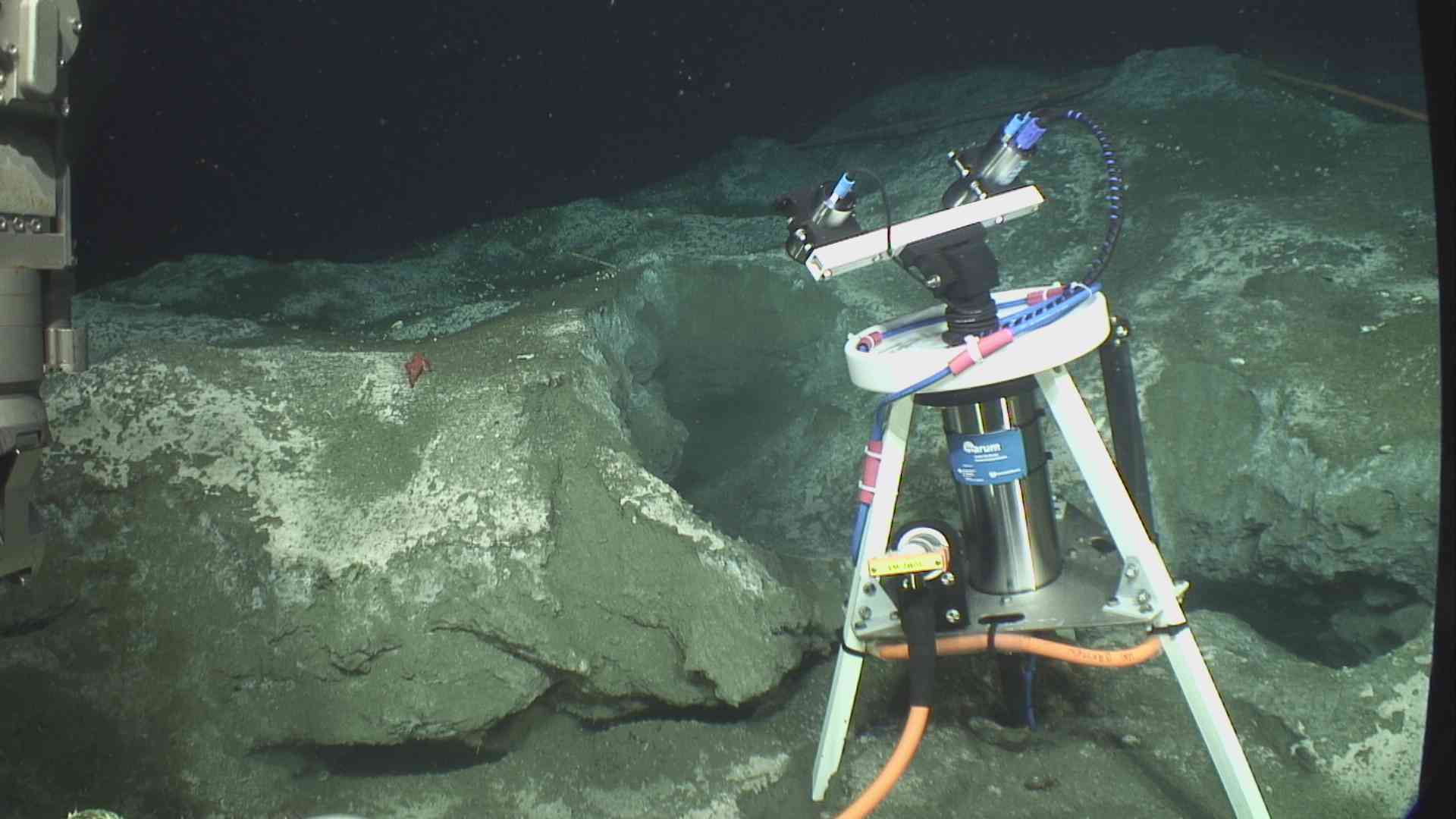For the second year in a row, a team from the MARUM institute at the University of Bremen, Germany, joined the OOI Visions expedition. Last year they connected two rotating sonar systems to the array at the southern Hydrate Ridge site, about 800 m deep. The southern Hydrate Ridge is a very active seepage area where methane, a potent greenhouse gas, is escaping from the seafloor. The purpose of the sonars is to monitor the activity and locations of the gas emissions over a long period of time in order to understand what controls the observed variations. So far, the sonars have produced a wealth of data showing how variable the methane release is, providing new information on the dynamics of seabed methane release at the southern Hydrate Ridge.

The MARUM team is joining this year’s expedition to install a 4K camera at the southern Hydrate Ridge in order to estimate the size of methane bubble plumes and their release rates. Those data will be correlated with sonar observations to increase our understanding of the seepage activity. Another aim is to repair one of the sonars. The deep-sea is a harsh corrosive environment and technical failures are fairly common. The rotating motor of one of the sonars ceased to function after nearly half-a-year. This cruise is the first and only opportunity this year to recover the sonar and to investigate the cause of failure. Luckily, the sonar could be quickly recovered and the cause of failure located. Premature wear out of the motor axis seal led to water infiltrating the motor, ultimately causing it to stop functioning. Luckily, the defective parts were able to be replaced and the sonar was redeployed at the same location on 25 June, tested, and is currently operational.

Thanks to the OOI Cabled Array, MARUM scientists are able to operate their instruments from home, in Germany, and to access the data almost in real-time and over several months or years. This is a feat in the field of deep-sea research, in which scientists have usually limited opportunities and time to conduct their experiments.
By: Yann Marcon (MARUM Center for Marine Environmental Sciences, Bremen, Germany)
